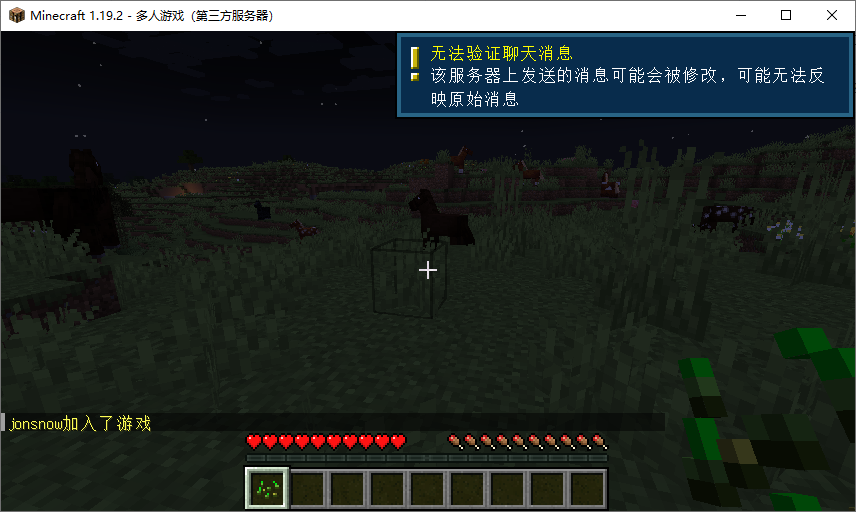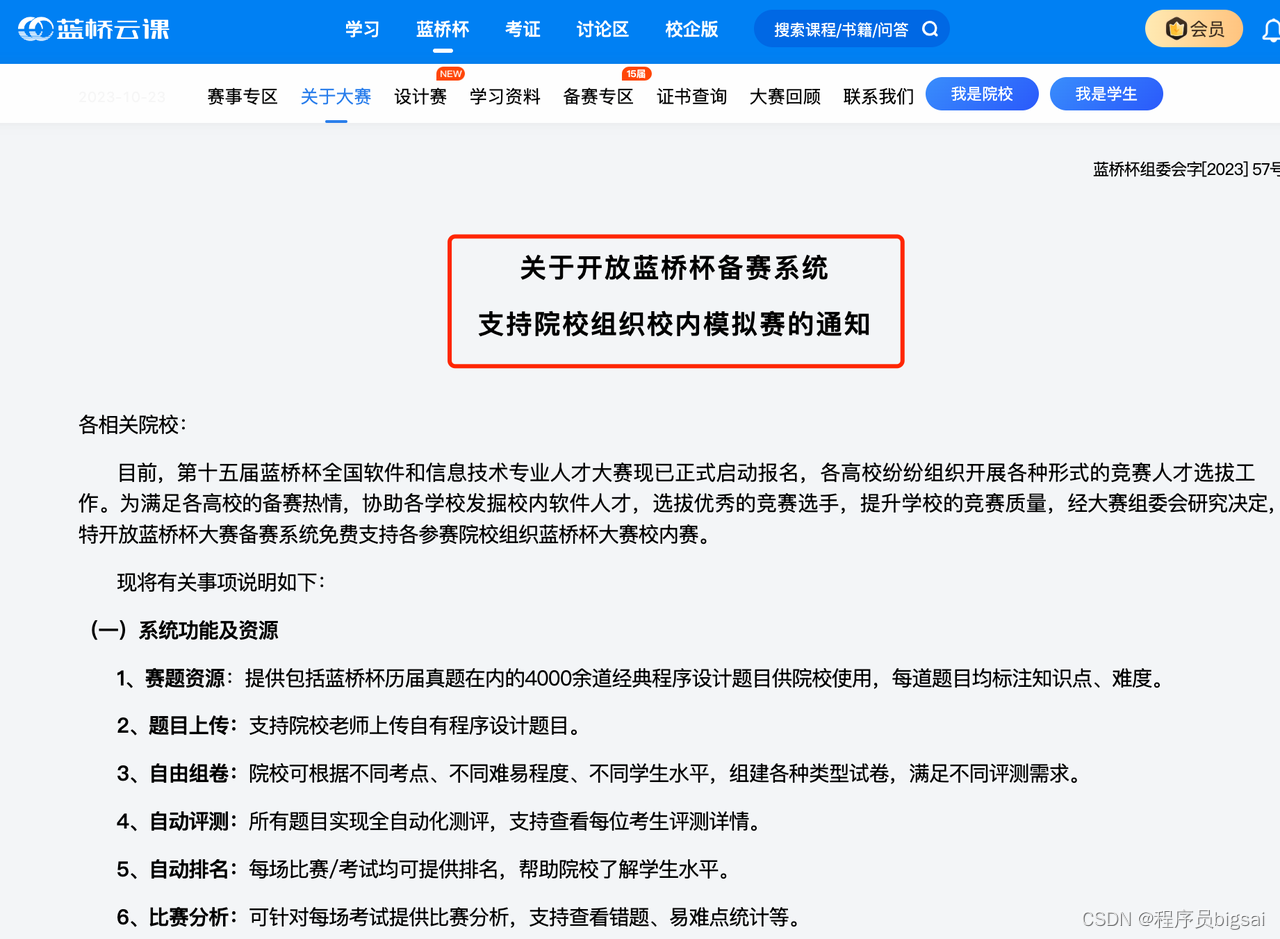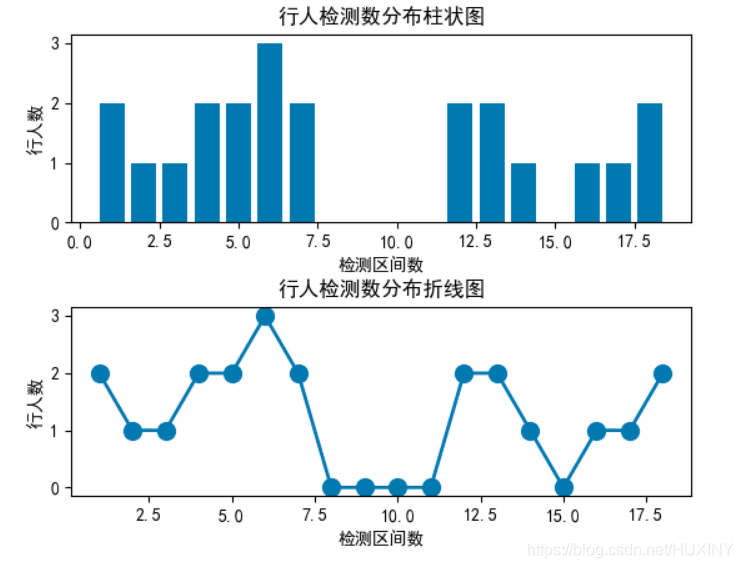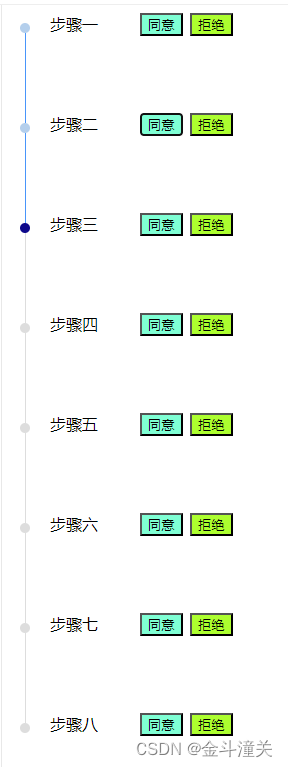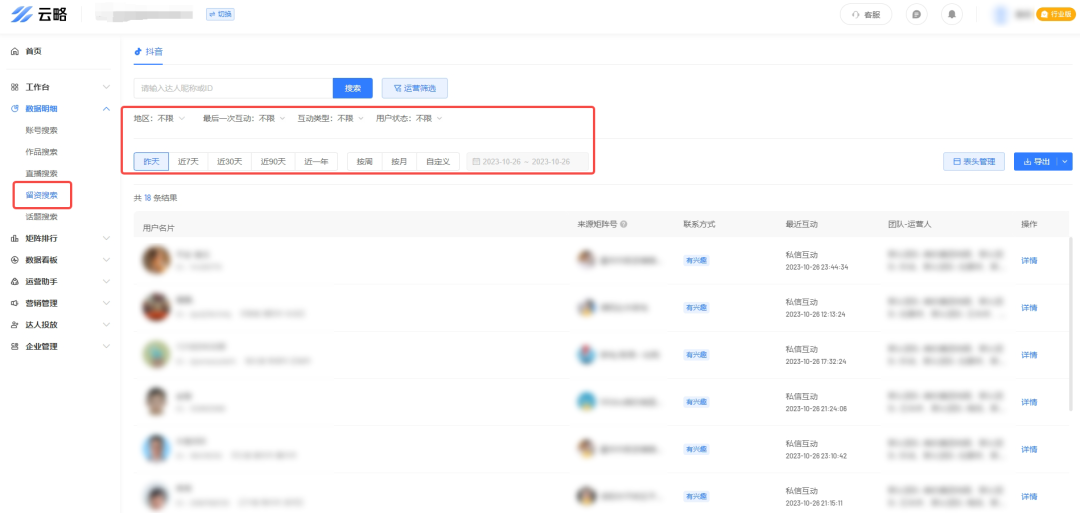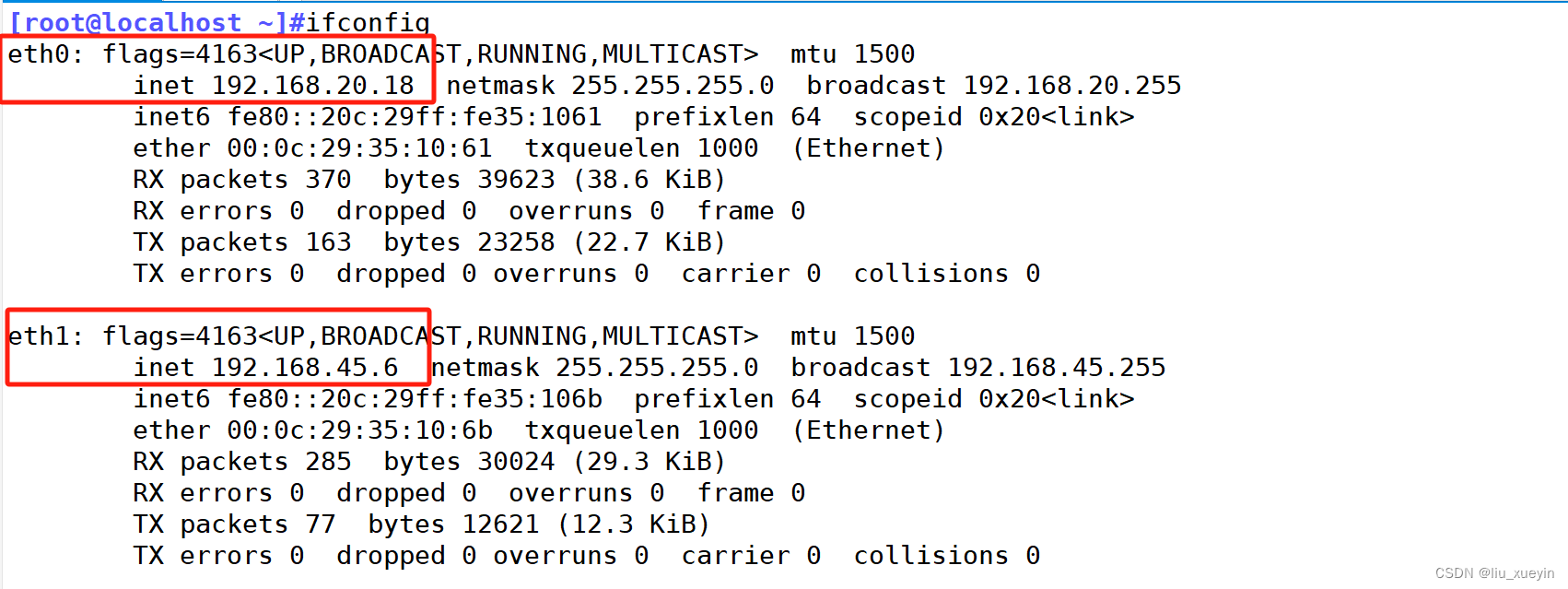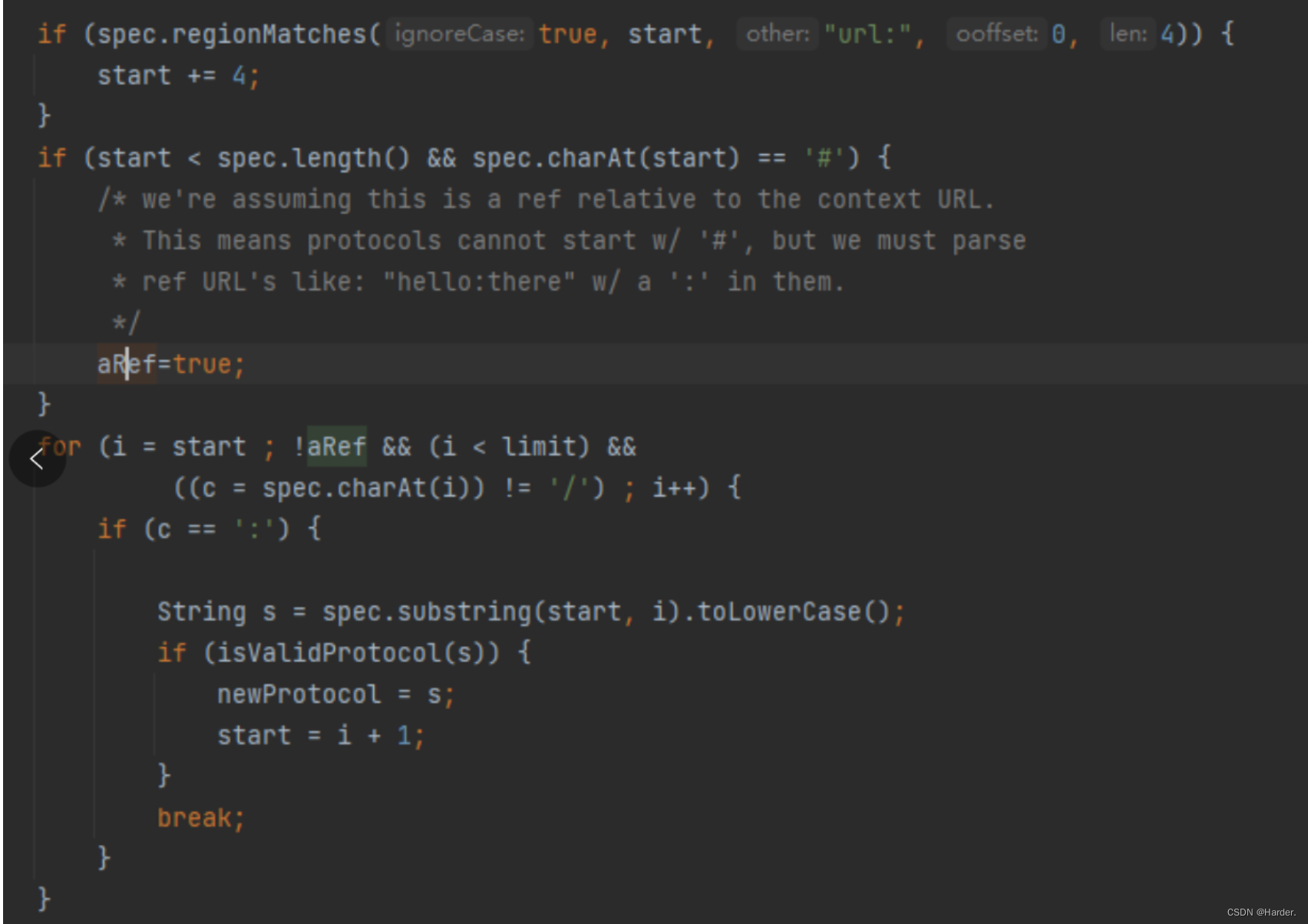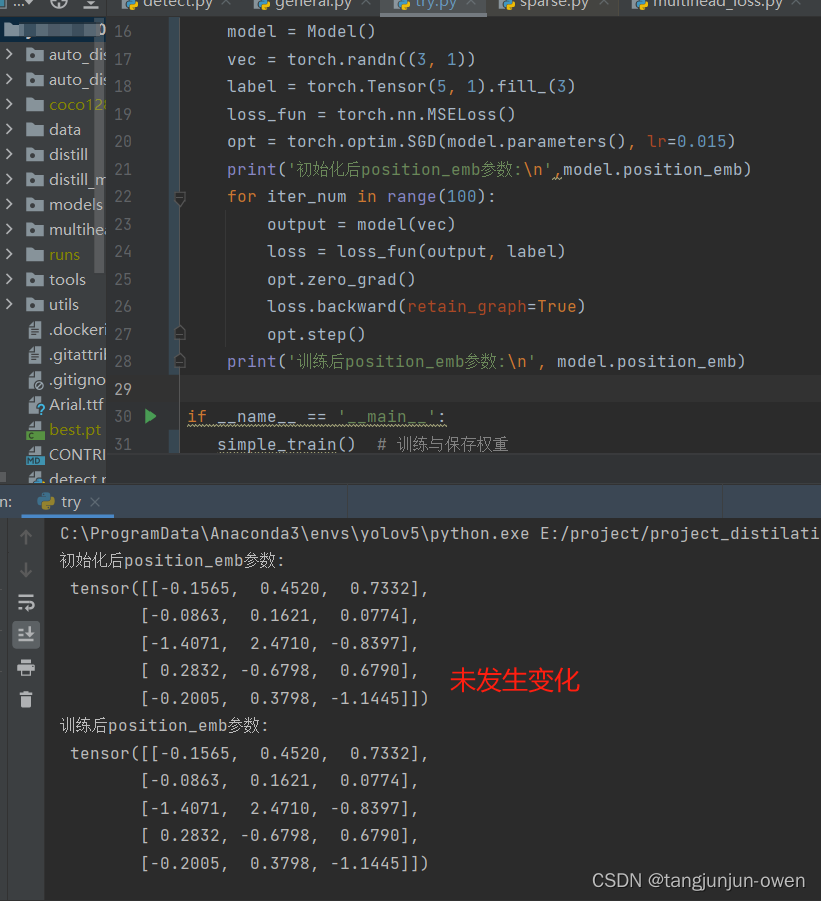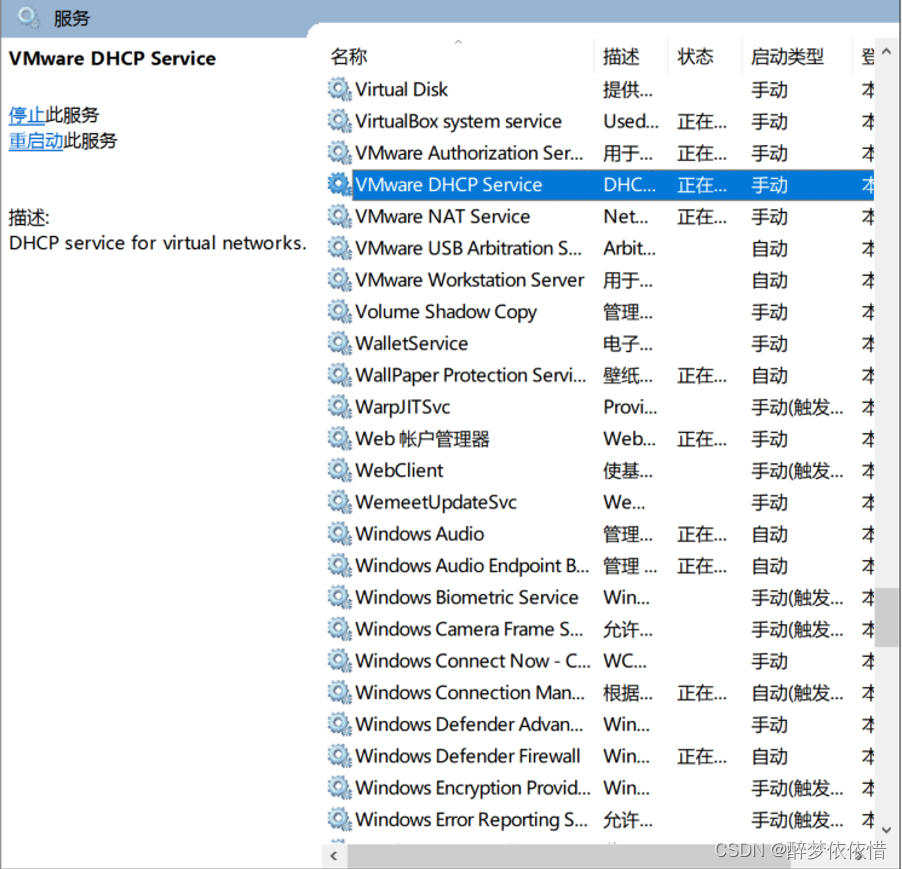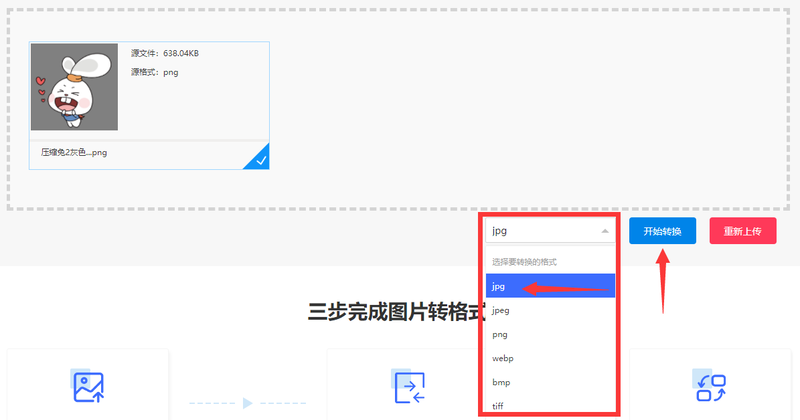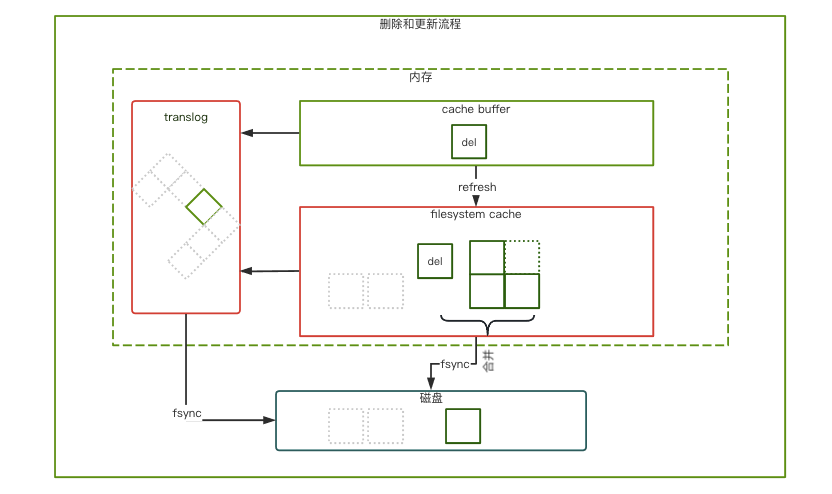detectron2建议ubuntu进行环境搭建,Windows大概率报错
一 环境搭建
创建虚拟环境
conda create -n detectron2 python=3.8 -y
conda activate detectron2
后面下载源代码建议存到git中再git clone
git clone https://github.com/facebookresearch/detectron2.git
python -m pip install -e detectron2
二 数据集构建
首先有两个文件夹,一个为图像,一个为标注完的voc的xml文件夹


后先划分数据集,创建以下格式
-- imageSets
---Main
----test.txt
----train.txt
----trainval.txt
----val.txt
运行以下代码进行划分
import os
import random
def main():
trainval_percent = 0.2
train_percent = 0.8
xmlfilepath = 'D:\\lunwen\\data\\data\\xml' # xml文件位置
txtsavepath = r'D:\\lunwen\\data\\data\\image' # 图像位置
total_xml = os.listdir(xmlfilepath)
num = len(total_xml)
list = range(num)
tv = int(num * trainval_percent)
tr = int(tv * train_percent)
trainval = random.sample(list, tv)
train = random.sample(trainval, tr)
## 以下为对应的txt文件进行修改
ftrainval = open('D:\\lunwen\\data\data\\ImageSets\\Main\\trainval.txt', 'w')
ftest = open('D:\\lunwen\\data\data\\ImageSets\\Main\\test.txt', 'w')
ftrain = open('D:\\lunwen\\data\data\\ImageSets\\Main\\train.txt', 'w')
fval = open('D:\\lunwen\\data\data\\ImageSets\\Main\\val.txt', 'w')
for i in list:
name = total_xml[i][:-4] + '\n'
if i in trainval:
ftrainval.write(name)
if i in train:
ftest.write(name)
else:
fval.write(name)
else:
ftrain.write(name)
ftrainval.close()
ftrain.close()
fval.close()
ftest.close()
if __name__=='__main__':
main();
划分完后对应的txt文件都有数据,后面将进行文件提取,提取出对应的训练/测试数据集及其xml文件
源目录下创建以下文件夹
-train_JPEGImages
-train_annotations
-val_JPEGImages
-val_annotations
import os
import shutil
class CopyXml():
def __init__(self):
# 你的xml格式的annotation的路径
self.xmlpath = r'D:\lunwen\data\data\xml'
self.jpgpath = r'D:\lunwen\data\data\image'
# 你训练集/测试集xml和jpg存放的路径
self.newxmlpath = r'D:\lunwen\data\data\val_annotations'
self.newjpgpath = r'D:\lunwen\data\data\val_JPEGImages'
def startcopy(self):
filelist = os.listdir(self.xmlpath) # file list in this directory
# print(len(filelist))
test_list = loadFileList()
# print(len(test_list))
for f in filelist:
xmldir = os.path.join(self.xmlpath, f)
(shotname, extension) = os.path.splitext(f)
jpgdir = os.path.join(self.jpgpath, shotname+'.jpg')
if str(shotname) in test_list:
# print('success')
shutil.copyfile(str(xmldir), os.path.join(self.newxmlpath, f))
shutil.copyfile(str(jpgdir), os.path.join(self.newjpgpath, shotname+'.jpg'))
# load the list of train/test file list
def loadFileList():
filelist = []
## 选取你上一步弄好的txt文件进行提取
f = open("D:\\lunwen\\data\\data\\ImageSets\\Main\\val.txt", "r")
# f = open("VOC2007/ImageSets/Main/train.txt", "r")
lines = f.readlines()
for line in lines:
# 去掉文件中每行的结尾字符
line = line.strip('\r\n') # to remove the '\n' for test.txt, '\r\n' for tainval.txt
line = str(line)
filelist.append(line)
f.close()
# print(filelist)
return filelist
if __name__ == '__main__':
demo = CopyXml()
demo.startcopy()
成功后对应文件夹下将会有对应txt下的图片及xml
后面便是voc转coco格式了,代码如下
# coding:utf-8
import sys
import os
import json
import xml.etree.ElementTree as ET
START_BOUNDING_BOX_ID = 1
# 注意下面的dict存储的是实际检测的类别,需要根据自己的实际数据进行修改
# 这里以自己的数据集person和hat两个类别为例,如果是VOC数据集那就是20个类别
# 注意类别名称和xml文件中的标注名称一致
PRE_DEFINE_CATEGORIES = {"Normal": 0, "No_wear": 1,"Playing_phone":2,"Smoking":3,"Sleeping":4,
"Playing_phone_smoking":5,"No_wear_playing_phone":6,"No_wear_smoking":7,"No_wear_sleeping":8,
"No_wear_playing_phone_smoking":9}
# 注意按照自己的数据集名称修改编号和名称
def get(root, name):
vars = root.findall(name)
return vars
def get_and_check(root, name, length):
vars = root.findall(name)
if len(vars) == 0:
raise NotImplementedError('Can not find %s in %s.' % (name, root.tag))
if length > 0 and len(vars) != length:
raise NotImplementedError('The size of %s is supposed to be %d, but is %d.' % (name, length, len(vars)))
if length == 1:
vars = vars[0]
return vars
def get_filename_as_int(filename):
try:
filename = os.path.splitext(filename)[0]
return (filename)
except:
raise NotImplementedError('Filename %s is supposed to be an integer.' % (filename))
def convert(xml_dir, json_file):
xmlFiles = os.listdir(xml_dir)
json_dict = {"images": [], "type": "instances", "annotations": [],
"categories": []}
categories = PRE_DEFINE_CATEGORIES
bnd_id = START_BOUNDING_BOX_ID
num = 0
for line in xmlFiles:
# print("Processing %s"%(line))
num += 1
if num % 50 == 0:
print("processing ", num, "; file ", line)
xml_f = os.path.join(xml_dir, line)
tree = ET.parse(xml_f)
root = tree.getroot()
# The filename must be a number
filename = line[:-4]
image_id = get_filename_as_int(filename)
size = get_and_check(root, 'size', 1)
width = int(get_and_check(size, 'width', 1).text)
height = int(get_and_check(size, 'height', 1).text)
# image = {'file_name': filename, 'height': height, 'width': width,
# 'id':image_id}
image = {'file_name': (filename + '.jpg'), 'height': height, 'width': width,
'id': image_id}
json_dict['images'].append(image)
# Cruuently we do not support segmentation
# segmented = get_and_check(root, 'segmented', 1).text
# assert segmented == '0'
for obj in get(root, 'object'):
category = get_and_check(obj, 'name', 1).text
if category not in categories:
new_id = len(categories)
categories[category] = new_id
category_id = categories[category]
bndbox = get_and_check(obj, 'bndbox', 1)
xmin = int(get_and_check(bndbox, 'xmin', 1).text) - 1
ymin = int(get_and_check(bndbox, 'ymin', 1).text) - 1
xmax = int(get_and_check(bndbox, 'xmax', 1).text)
ymax = int(get_and_check(bndbox, 'ymax', 1).text)
assert (xmax > xmin)
assert (ymax > ymin)
o_width = abs(xmax - xmin)
o_height = abs(ymax - ymin)
ann = {'area': o_width * o_height, 'iscrowd': 0, 'image_id':
image_id, 'bbox': [xmin, ymin, o_width, o_height],
'category_id': category_id, 'id': bnd_id, 'ignore': 0,
'segmentation': []}
json_dict['annotations'].append(ann)
bnd_id = bnd_id + 1
for cate, cid in categories.items():
cat = {'supercategory': 'none', 'id': cid, 'name': cate}
json_dict['categories'].append(cat)
json_fp = open(json_file, 'w')
json_str = json.dumps(json_dict)
json_fp.write(json_str)
json_fp.close()
if __name__ == '__main__':
folder_list = ["train_annotations"]
# 注意更改base_dir为本地实际图像和标注文件路径
base_dir = "D:\\lunwen\\data\\data\\"
# 修改为自己的路径
for i in range(1):
folderName = folder_list[i]
xml_dir = base_dir + folderName
json_dir = base_dir + folderName + "/instances_" + folderName + ".json"
print("deal: ", folderName)
print("xml dir: ", xml_dir)
print("json file: ", json_dir)
convert(xml_dir, json_dir)
最后生成

三 模型训练
方法一
在detectron2下datasets中创建coco文件夹,将对应数据放入
coco
----train2017 ####手动创建
----val2017 ####手动创建
----annotations ####手动创建
--------instances_train2017.json ####脚本生成
--------instances_val2017.json ####脚本生成
因为pytorch训练自己的数据集,涉及到数据集的注册,元数据集注册和加载,过程比较麻烦,这里我参考官方样本,写了一个脚本trainsample.py放置于model_train文件夹下。
import os
import cv2
import logging
from collections import OrderedDict
import detectron2.utils.comm as comm
from detectron2.utils.visualizer import Visualizer
from detectron2.checkpoint import DetectionCheckpointer
from detectron2.config import get_cfg
from detectron2.data import DatasetCatalog, MetadataCatalog
from detectron2.data.datasets.coco import load_coco_json
from detectron2.engine import DefaultTrainer, default_argument_parser, default_setup, launch
from detectron2.evaluation import COCOEvaluator, verify_results
from detectron2.modeling import GeneralizedRCNNWithTTA
# 数据集路径
DATASET_ROOT = './datasets/coco'
ANN_ROOT = os.path.join(DATASET_ROOT, 'annotations')
TRAIN_PATH = os.path.join(DATASET_ROOT, 'train2017')
VAL_PATH = os.path.join(DATASET_ROOT, 'val2017')
TRAIN_JSON = os.path.join(ANN_ROOT, 'instances_train2017.json')
# VAL_JSON = os.path.join(ANN_ROOT, 'val.json')
VAL_JSON = os.path.join(ANN_ROOT, 'instances_val2017.json')
CLASS_NAMES = ['Normal','No_wear','Playing_phone','Smoking','Sleeping','Playing_phone_smoking','No_wear_playing_phone'
,'No_wear_smoking','No_wear_sleeping','No_wear_playing_phone_smoking']
# 数据集类别元数据
DATASET_CATEGORIES = [
# {"name": "background", "id": 0, "isthing": 1, "color": [220, 20, 60]},
{"name": "Normal", "id": 0, "isthing": 1, "color": [255, 0, 0]}, # 红色
{"name": "No_wear", "id": 1, "isthing": 1, "color": [0, 255, 0]}, # 绿色
{"name": "Playing_phone", "id": 2, "isthing": 1, "color": [0, 0, 255]}, # 蓝色
{"name": "Smoking", "id": 3, "isthing": 1, "color": [255, 255, 0]}, # 黄色
{"name": "Sleeping", "id": 4, "isthing": 1, "color": [255, 0, 255]}, # 紫色
{"name": "Playing_phone_smoking", "id": 5, "isthing": 1, "color": [0, 255, 255]}, # 青色
{"name": "No_wear_playing_phone", "id": 6, "isthing": 1, "color": [128, 0, 128]}, # 深紫色
{"name": "No_wear_smoking", "id": 7, "isthing": 1, "color": [128, 128, 0]}, # 深黄色
{"name": "No_wear_sleeping", "id": 8, "isthing": 1, "color": [0, 128, 128]}, # 深青色
{"name": "No_wear_playing_phone_smoking", "id": 9, "isthing": 1, "color": [128, 128, 128]}
]
# 数据集的子集
PREDEFINED_SPLITS_DATASET = {
"train_2019": (TRAIN_PATH, TRAIN_JSON),
"val_2019": (VAL_PATH, VAL_JSON),
}
def register_dataset():
"""
purpose: register all splits of dataset with PREDEFINED_SPLITS_DATASET
"""
for key, (image_root, json_file) in PREDEFINED_SPLITS_DATASET.items():
register_dataset_instances(name=key,
metadate=get_dataset_instances_meta(),
json_file=json_file,
image_root=image_root)
def get_dataset_instances_meta():
"""
purpose: get metadata of dataset from DATASET_CATEGORIES
return: dict[metadata]
"""
thing_ids = [k["id"] for k in DATASET_CATEGORIES if k["isthing"] == 1]
thing_colors = [k["color"] for k in DATASET_CATEGORIES if k["isthing"] == 1]
# assert len(thing_ids) == 2, len(thing_ids)
thing_dataset_id_to_contiguous_id = {k: i for i, k in enumerate(thing_ids)}
thing_classes = [k["name"] for k in DATASET_CATEGORIES if k["isthing"] == 1]
ret = {
"thing_dataset_id_to_contiguous_id": thing_dataset_id_to_contiguous_id,
"thing_classes": thing_classes,
"thing_colors": thing_colors,
}
return ret
def register_dataset_instances(name, metadate, json_file, image_root):
"""
purpose: register dataset to DatasetCatalog,
register metadata to MetadataCatalog and set attribute
"""
DatasetCatalog.register(name, lambda: load_coco_json(json_file, image_root, name))
MetadataCatalog.get(name).set(json_file=json_file,
image_root=image_root,
evaluator_type="coco",
**metadate)
# 注册数据集和元数据
def plain_register_dataset():
DatasetCatalog.register("train_2019", lambda: load_coco_json(TRAIN_JSON, TRAIN_PATH, "train_2019"))
MetadataCatalog.get("train_2019").set(thing_classes=CLASS_NAMES,
json_file=TRAIN_JSON,
image_root=TRAIN_PATH)
DatasetCatalog.register("val_2019", lambda: load_coco_json(VAL_JSON, VAL_PATH, "val_2019"))
MetadataCatalog.get("val_2019").set(thing_classes=CLASS_NAMES,
json_file=VAL_JSON,
image_root=VAL_PATH)
# 查看数据集标注
def checkout_dataset_annotation(name="train_2019"):
dataset_dicts = load_coco_json(TRAIN_JSON, TRAIN_PATH, name)
for d in dataset_dicts:
img = cv2.imread(d["file_name"])
visualizer = Visualizer(img[:, :, ::-1], metadata=MetadataCatalog.get(name), scale=1.5)
vis = visualizer.draw_dataset_dict(d)
cv2.imshow('show', vis.get_image()[:, :, ::-1])
cv2.waitKey(0)
register_dataset()
checkout_dataset_annotation()
slowfast源码中采取的模型架构为

在config中找到对应的yaml文件,并在trainsample.py进行设定
后运行
$ python3 model_train/trainsample.py
测试代码为
python demo/demo.py --config-file /root/autodl-tmp/detectron2/output_trainsample/config.yaml --video-input detect/1.avi --output demo/4.avi --opts MODEL.WEIGHTS /root/autodl-tmp/detectron2/output_trainsample/model_final.pth
方法2
同方法一 在detectron2下datasets中创建coco文件夹,将对应数据放入
coco
----train2017 ####手动创建
----val2017 ####手动创建
----annotations ####手动创建
--------instances_train2017.json ####脚本生成
--------instances_val2017.json ####脚本生成
在detectron2目录下创建一个train_net.py文件
内容为:
#!/usr/bin/env python
# Copyright (c) Facebook, Inc. and its affiliates.
"""
A main training script.
This scripts reads a given config file and runs the training or evaluation.
It is an entry point that is made to train standard models in detectron2.
In order to let one script support training of many models,
this script contains logic that are specific to these built-in models and therefore
may not be suitable for your own project.
For example, your research project perhaps only needs a single "evaluator".
Therefore, we recommend you to use detectron2 as an library and take
this file as an example of how to use the library.
You may want to write your own script with your datasets and other customizations.
"""
import logging
import os
from collections import OrderedDict
import detectron2.utils.comm as comm
from detectron2.checkpoint import DetectionCheckpointer
from detectron2.config import get_cfg
from detectron2.data import MetadataCatalog
from detectron2.engine import DefaultTrainer, default_argument_parser, default_setup, hooks, launch
from detectron2.evaluation import (
CityscapesInstanceEvaluator,
CityscapesSemSegEvaluator,
COCOEvaluator,
COCOPanopticEvaluator,
DatasetEvaluators,
LVISEvaluator,
PascalVOCDetectionEvaluator,
SemSegEvaluator,
verify_results,
)
from detectron2.modeling import GeneralizedRCNNWithTTA
from detectron2.data.datasets import register_coco_instances
def build_evaluator(cfg, dataset_name, output_folder=None):
"""
Create evaluator(s) for a given dataset.
This uses the special metadata "evaluator_type" associated with each builtin dataset.
For your own dataset, you can simply create an evaluator manually in your
script and do not have to worry about the hacky if-else logic here.
"""
if output_folder is None:
output_folder = os.path.join(cfg.OUTPUT_DIR, "inference")
evaluator_list = []
evaluator_type = MetadataCatalog.get(dataset_name).evaluator_type
if evaluator_type in ["sem_seg", "coco_panoptic_seg"]:
evaluator_list.append(
SemSegEvaluator(
dataset_name,
distributed=True,
output_dir=output_folder,
)
)
if evaluator_type in ["coco", "coco_panoptic_seg"]:
evaluator_list.append(COCOEvaluator(dataset_name, output_dir=output_folder))
if evaluator_type == "coco_panoptic_seg":
evaluator_list.append(COCOPanopticEvaluator(dataset_name, output_folder))
if evaluator_type == "cityscapes_instance":
return CityscapesInstanceEvaluator(dataset_name)
if evaluator_type == "cityscapes_sem_seg":
return CityscapesSemSegEvaluator(dataset_name)
elif evaluator_type == "pascal_voc":
return PascalVOCDetectionEvaluator(dataset_name)
elif evaluator_type == "lvis":
return LVISEvaluator(dataset_name, output_dir=output_folder)
if len(evaluator_list) == 0:
raise NotImplementedError(
"no Evaluator for the dataset {} with the type {}".format(dataset_name, evaluator_type)
)
elif len(evaluator_list) == 1:
return evaluator_list[0]
return DatasetEvaluators(evaluator_list)
class Trainer(DefaultTrainer):
"""
We use the "DefaultTrainer" which contains pre-defined default logic for
standard training workflow. They may not work for you, especially if you
are working on a new research project. In that case you can write your
own training loop. You can use "tools/plain_train_net.py" as an example.
"""
@classmethod
def build_evaluator(cls, cfg, dataset_name, output_folder=None):
return build_evaluator(cfg, dataset_name, output_folder)
@classmethod
def test_with_TTA(cls, cfg, model):
logger = logging.getLogger("detectron2.trainer")
# In the end of training, run an evaluation with TTA
# Only support some R-CNN models.
logger.info("Running inference with test-time augmentation ...")
model = GeneralizedRCNNWithTTA(cfg, model)
evaluators = [
cls.build_evaluator(
cfg, name, output_folder=os.path.join(cfg.OUTPUT_DIR, "inference_TTA")
)
for name in cfg.DATASETS.TEST
]
res = cls.test(cfg, model, evaluators)
res = OrderedDict({k + "_TTA": v for k, v in res.items()})
return res
def setup(args):
"""
Create configs and perform basic setups.
"""
cfg = get_cfg()
args.config_file = "/root/autodl-tmp/detectron2/configs/COCO-Detection/faster_rcnn_R_50_FPN_3x.yaml"
cfg.merge_from_file(args.config_file)
cfg.merge_from_list(args.opts)
# 更改配置参数
cfg.DATASETS.TRAIN = ("coco_my_train",) # 训练数据集名称
cfg.DATASETS.TEST = ("coco_my_val",)
cfg.DATALOADER.NUM_WORKERS = 2 # 单线程
#cfg.INPUT.CROP.ENABLED = True
#cfg.INPUT.MAX_SIZE_TRAIN = 640 # 训练图片输入的最大尺寸
#cfg.INPUT.MAX_SIZE_TEST = 640 # 测试数据输入的最大尺寸
#cfg.INPUT.MIN_SIZE_TRAIN = (512, 768) # 训练图片输入的最小尺寸,可以设定为多尺度训练
#cfg.INPUT.MIN_SIZE_TEST = 640
#cfg.INPUT.MIN_SIZE_TRAIN_SAMPLING,其存在两种配置,分别为 choice 与 range :
# range 让图像的短边从 512-768随机选择
#choice : 把输入图像转化为指定的,有限的几种图片大小进行训练,即短边只能为 512或者768
#cfg.INPUT.MIN_SIZE_TRAIN_SAMPLING = 'range'
# 本句一定要看下注释!!!!!!!!
cfg.MODEL.ROI_HEADS.NUM_CLASSES = 10
#cfg.MODEL.RETINANET.NUM_CLASSES = 10 # 类别数+1(因为有background,也就是你的 cate id 从 1 开始,如果您的数据集Json下标从 0 开始,这个改为您对应的类别就行,不用再加背景类!!!!!)
#cfg.MODEL.WEIGHTS="/home/yourstorePath/.pth"
cfg.MODEL.WEIGHTS = "/root/autodl-tmp/detectron2/model_final_280758.pkl" # 预训练模型权重
cfg.SOLVER.IMS_PER_BATCH = 8 # batch_size=2; iters_in_one_epoch = dataset_imgs/batch_size
# 根据训练数据总数目以及batch_size,计算出每个epoch需要的迭代次数
#9000为你的训练数据的总数目,可自定义
ITERS_IN_ONE_EPOCH = int(50/ cfg.SOLVER.IMS_PER_BATCH)
# 指定最大迭代次数
cfg.SOLVER.MAX_ITER = 1500
# 初始学习率
cfg.SOLVER.BASE_LR = 0.002
# 优化器动能
cfg.SOLVER.MOMENTUM = 0.9
#权重衰减
cfg.SOLVER.WEIGHT_DECAY = 0.0001
cfg.SOLVER.WEIGHT_DECAY_NORM = 0.0
# 学习率衰减倍数
cfg.SOLVER.GAMMA = 0.1
# 迭代到指定次数,学习率进行衰减
cfg.SOLVER.STEPS = (900,)
# 在训练之前,学习率慢慢增加初始学习率
cfg.SOLVER.WARMUP_FACTOR = 1.0 / 1000
# 热身迭代次数
cfg.SOLVER.WARMUP_ITERS = 500
cfg.MODEL.DEVICE = 'cuda'
cfg.SOLVER.WARMUP_METHOD = "linear"
# 保存模型文件的命名数据减1
#cfg.SOLVER.CHECKPOINT_PERIOD = ITERS_IN_ONE_EPOCH - 1
#cfg.MODEL.DEVICE = 'cuda'
# 迭代到指定次数,进行一次评估
cfg.TEST.EVAL_PERIOD = ITERS_IN_ONE_EPOCH
cfg.TEST.EVAL_PERIOD = 100
cfg.OUTPUT_DIR = "./output_trainsample/"
cfg.freeze()
default_setup(cfg, args)
return cfg
def main(args):
cfg = setup(args)
# coco_my_train是你的数据集自定义的名字,没有要求
# 后面就是你数据集json文件放置和图片放置路径
# 这是训练集
register_coco_instances("coco_my_train", {}, "/root/autodl-tmp/detectron2/mydatasets/coco/annotations/instances_train2017.json",
"/root/autodl-tmp/detectron2/mydatasets/coco/train2017")
# 验证集
register_coco_instances("coco_my_val", {}, "/root/autodl-tmp/detectron2/mydatasets/coco/annotations/instances_val2017.json",
"/root/autodl-tmp/detectron2/mydatasets/coco/val2017")
if args.eval_only:
model = Trainer.build_model(cfg)
DetectionCheckpointer(model, save_dir=cfg.OUTPUT_DIR).resume_or_load(
cfg.MODEL.WEIGHTS, resume=args.resume
)
res = Trainer.test(cfg, model)
if cfg.TEST.AUG.ENABLED:
res.update(Trainer.test_with_TTA(cfg, model))
if comm.is_main_process():
verify_results(cfg, res)
return res
"""
If you'd like to do anything fancier than the standard training logic,
consider writing your own training loop (see plain_train_net.py) or
subclassing the trainer.
"""
trainer = Trainer(cfg)
trainer.resume_or_load(resume=args.resume)
if cfg.TEST.AUG.ENABLED:
trainer.register_hooks(
[hooks.EvalHook(0, lambda: trainer.test_with_TTA(cfg, trainer.model))]
)
return trainer.train()
"""
这部分代码可以利用注册数据集的元数据得到你的数据字典格式和内容,可以打印和加载注释图片
custom_metadata = MetadataCatalog.get("coco_my_train")
dataset_dicts = DatasetCatalog.get("coco_my_train")
print(dataset_dicts)
for d in random.sample(dataset_dicts, 1):
img = cv2.imread(d["file_name"])
#print(img)
visualizer = Visualizer(img[:, :, ::-1], metadata=custom_metadata, scale=1)
vis = visualizer.draw_dataset_dict(d)
cv2.imshow('Sample',vis.get_image()[:, :, ::-1])
cv2.waitKey(1500)
"""
if __name__ == "__main__":
args = default_argument_parser().parse_args()
print("Command Line Args:", args)
launch(
main,
args.num_gpus,
num_machines=args.num_machines,
machine_rank=args.machine_rank,
dist_url=args.dist_url,
args=(args,),
)
后运行
python train_net.py
后续demo代码同方法一
python demo/demo.py --config-file /root/autodl-tmp/detectron2/output_trainsample/config.yaml --video-input /root/autodl-tmp/detectron2/detect/1.avi --output demo/4.avi --opts MODEL.WEIGHTS /root/autodl-tmp/detectron2/output_trainsample/model_final.pth
五 问题
1.缺少cv2模块
pip install opencv-python
2.PIL中缺少模块
`LINEAR` is deprecated and will be removed in Pillow 10 (2023-07-01). Use BILINEAR or Resampling.BILINEAR instead.
版本更新
pip install pillow==9.5.0
